A precast element is defined as a “product made of concrete and manufactured in a place other than its final location of use, protected from adverse environmental conditions during manufacturing and which is the result of an industrial process under a factory production control system, with the possibility of shortening delivery times”.
It is believed that the first origins of concrete date back to 7,000 B.C. for the construction of ancient Babylon, although other historians go to northern Chile in 3,000 B.C., where samples of rudimentary concrete were found. But what is undoubted is that the first massive use of concrete dates back to the Roman Empire with numerous works that are still standing today.
The origin of prefabrication, understood as the application of industrial processes to construction, can be found in the middle of the 18th century.
But as for the fusion of the material (concrete) and the technique (prefabrication), precast concrete is still a young way of building, if we consider that its spectacular development took place from the second half of the 20th century, the previous trigger being the patent granted in 1824 to Joseph Aspdin “An Innovation in the Manner of Producing an Artificial Stone”, which he called “Portland Cement”.
That said, the revolution involving artificial intelligence, BIM technologies and the challenges of sustainability are completely changing modular construction. A revolution is unfolding today in this regard.
Modern Methods of Construction (MMC)
Modern construction methods, also referred to as “smart construction,” are replacing traditional construction.
It is based primarily on modular manufacturing and is revolutionizing the way buildings are constructed more quickly, cost-effectively and efficiently. In most situations, this manufacturing takes place off-site and the parts are assembled on site.
In countries such as Sweden, almost half of all newly constructed homes use this method, reaching 80% in the case of single-family homes.
Modern construction methods are wide-ranging: the prefabricated flat panel system, prefabricated cladding panels, 3D volumetric modules, concrete walls and slabs, flat slab construction, double wall technology, precast concrete foundations, etc.
Benefits of modern construction methods
The benefits of CMM construction over traditional construction are more than remarkable:
- Time savings of up to 50%.
- Cost reduction.
- It is more sustainable by using environmentally friendly materials.
- Custom designs.
- Reduced noise pollution and more livable cities
- Less labor required.
For these and other reasons, the number of prefabricated structures increased by 24% in 2021. And at Recense, we have been committed to industrialized construction and prefabrication for years, providing our solutions in fastening.
BIM Methodology
To all this we must add the application of the BIM methodology in building and infrastructure projects, which is accelerating the change with respect to more traditional construction. It consists of the creation of digital models of the project, whether it is a building or an infrastructure, through advanced software that allows sharing these models among the different agents involved: architecture and engineering, builder, developer and suppliers.
In Spain, it is expected to soon become a legal requirement in this type of projects.
More information: BIM Guide for precast concrete companies by Andece.












